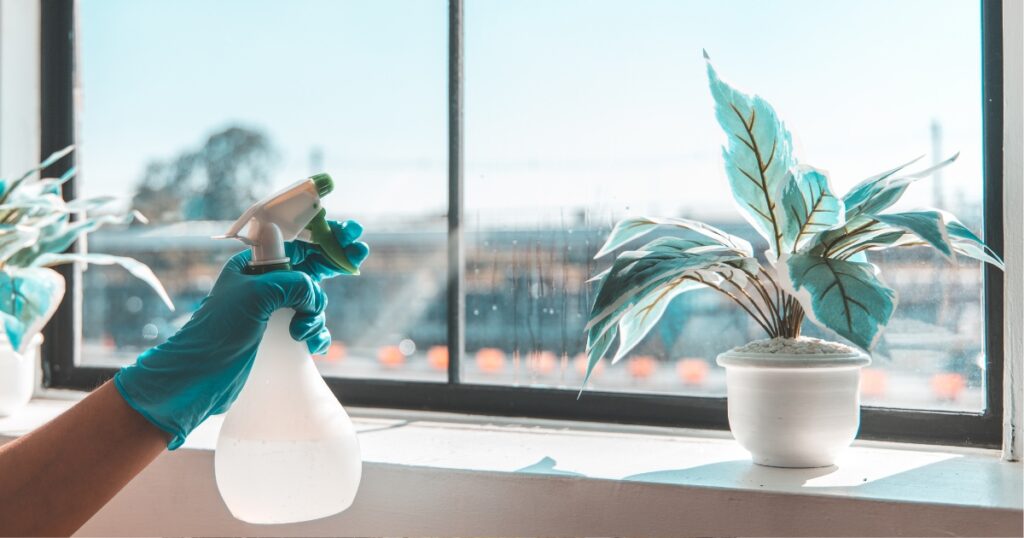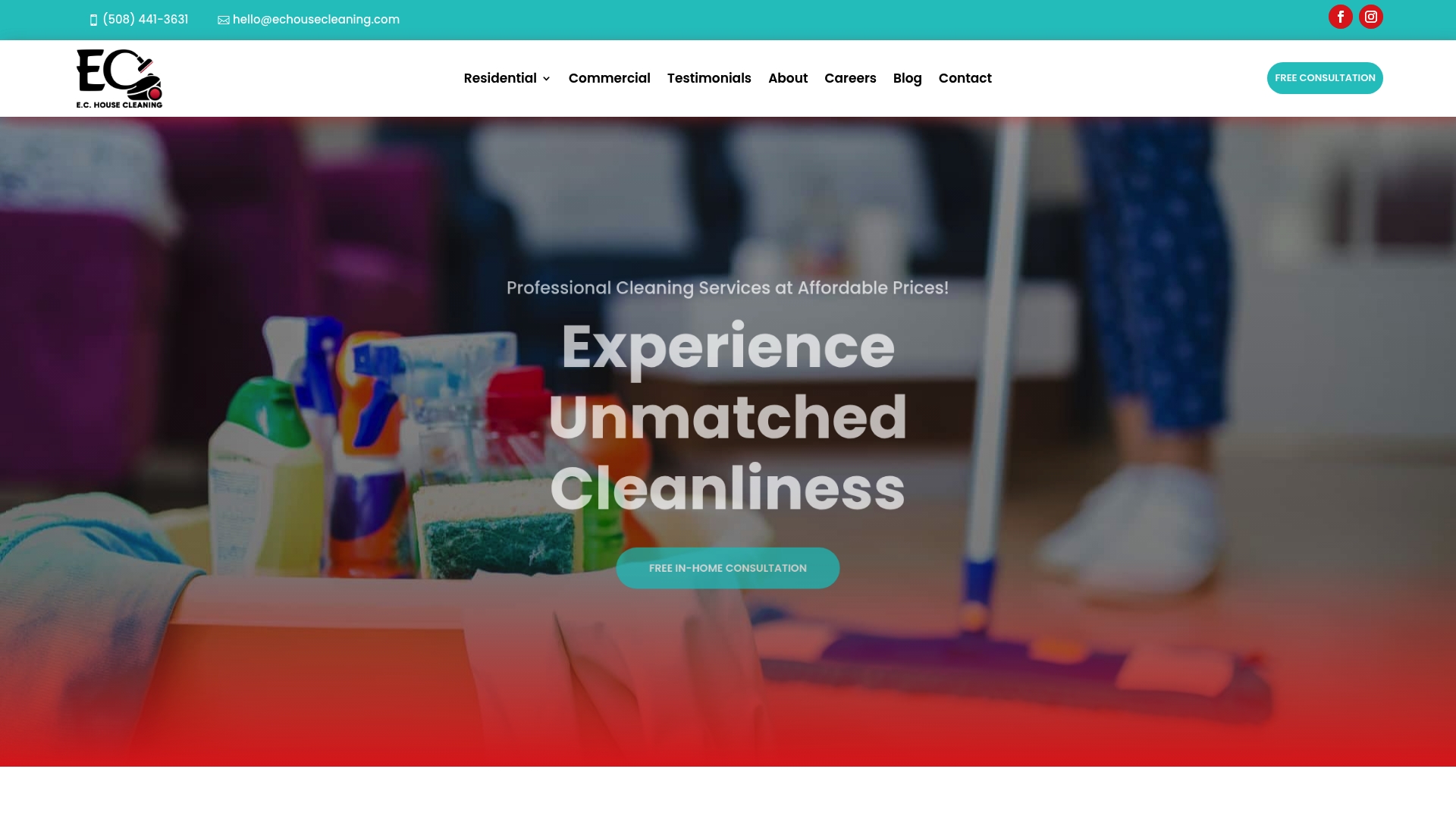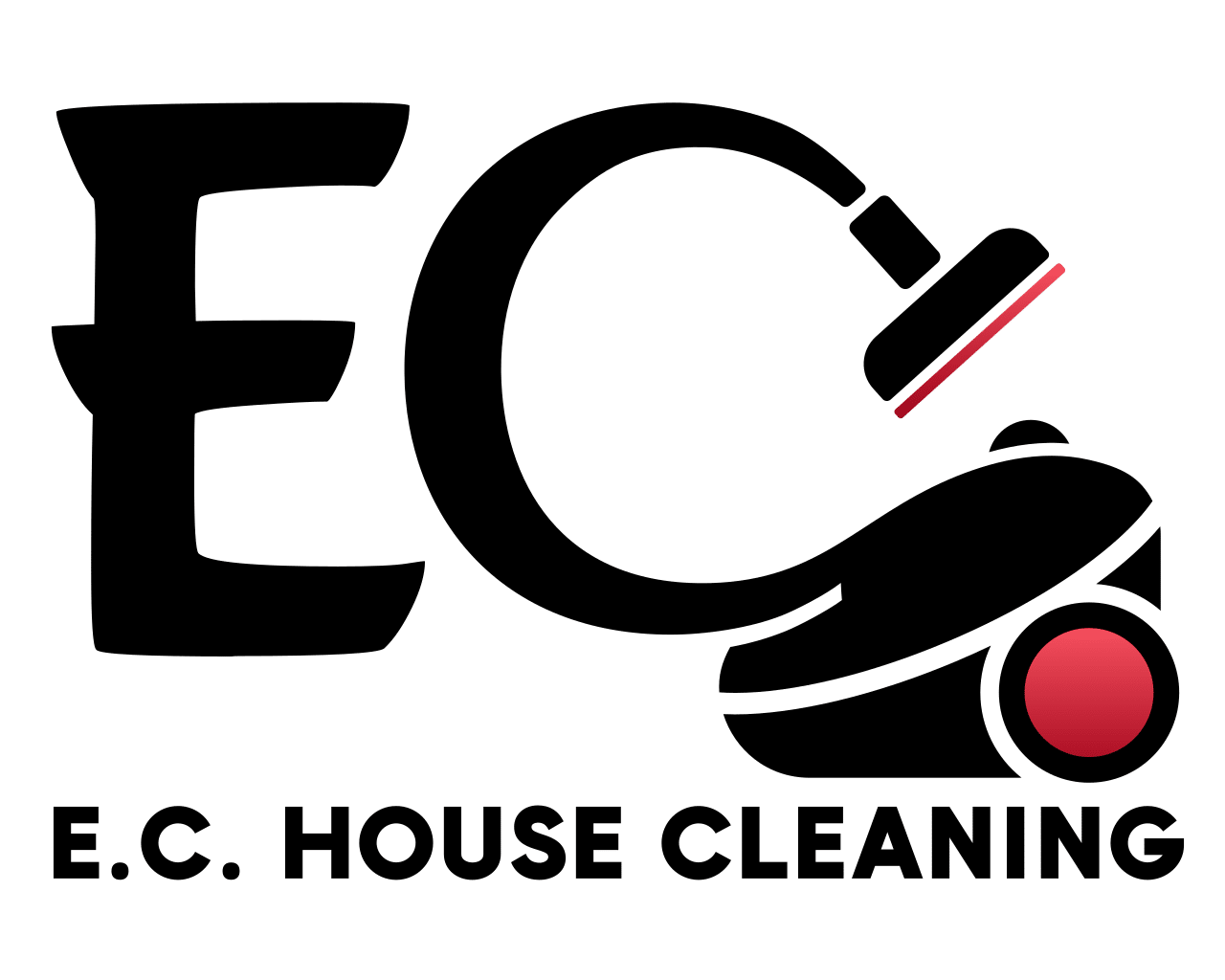Asthma-friendly cleaning is often seen as a chore for only the most sensitive homes, yet the truth is that over 25 million Americans have asthma, and regular cleaning can make all the difference. People usually think harsh cleaning products mean a cleaner home, but studies show those same chemicals can trigger far more symptoms than dust or pet dander ever will. The surprising part is that simple swaps like switching to natural cleaners and using HEPA filters help protect everyone’s lungs, not just those with asthma. Cleaning for asthma is very important and below you will find out why.
Table of Contents: Cleaning for Asthma
- Understanding Asthma Triggers In Your Space
- Choosing Safe Cleaning Products And Methods
- Cleaning Routines For Homes And Businesses
- Practical Tips For Property Managers And Busy Lifestyles
Quick Summary
| Takeaway | Explanation |
|---|---|
| Identify common asthma triggers at home. | Be aware of dust mites, pet dander, and mold, which can provoke asthma symptoms. Regularly check for these allergens in your living space. |
| Choose low-VOC and natural cleaning products. | Opt for cleaning solutions that are free from harsh chemicals and labeled as low-VOC to reduce respiratory irritants. Natural cleaning agents like vinegar and baking soda are effective alternatives. |
| Implement regular cleaning routines. | Maintain a consistent cleaning schedule that focuses on areas prone to allergens, such as bedrooms and living areas, to minimize dust and trigger build-up. |
| Use HEPA filters for cleaning. | Employ vacuum cleaners and air purifiers with HEPA filters to capture microscopic particles effectively, enhancing indoor air quality for asthma management. |
| Leverage technology for efficient cleaning. | Utilize smart cleaning devices and monitoring systems to help maintain optimal indoor air quality and streamline cleaning tasks without compromising health. |
Understanding Asthma Triggers in Your Space
Asthma affects millions of people worldwide, transforming seemingly safe home environments into potential health hazards. Understanding the invisible triggers lurking in your living spaces is crucial for managing and preventing asthma symptoms. Indoor air quality plays a critical role in respiratory health, with numerous environmental factors contributing to potential asthma attacks.

Common Indoor Asthma Triggers
The invisible world of indoor pollutants can significantly impact respiratory health. Research from the Environmental Protection Agency reveals that indoor environments often contain multiple asthma triggers that can cause inflammation and breathing difficulties. These triggers include dust mites, pet dander, mold spores, secondhand smoke, and chemical irritants from cleaning products and building materials.
Here’s a summary table comparing the common indoor asthma triggers discussed in this section, highlighting their sources and effects on respiratory health.
| Asthma Trigger | Common Sources | Impact on Respiratory Health |
|---|---|---|
| Dust mites | Bedding, upholstered furniture, carpets | Trigger inflammation and breathing difficulties |
| Pet dander | Pets (fur, skin flakes) | Causes allergic reactions, can provoke symptoms |
| Mold spores | Damp areas (bathrooms, basements) | Irritate airway, potential for asthma attacks |
| Secondhand smoke | Cigarettes, cigars | Causes immediate and long-term respiratory issues |
| Chemical irritants (VOCs) | Cleaning products, paint, furniture | Irritate lungs, trigger asthma symptoms |
Dust mites are particularly problematic microscopic creatures that thrive in warm, humid environments. They live in bedding, upholstered furniture, and carpets, feeding on dead skin cells and producing waste particles that can trigger severe asthma symptoms. A single mattress can harbor thousands of dust mites, making bedrooms potential danger zones for individuals with respiratory sensitivities.
The Hidden Impact of Indoor Air Quality
Understanding indoor air quality goes beyond simple cleaning. Researchers at the National Institutes of Health highlight that poor ventilation can concentrate pollutants, making indoor spaces up to five times more polluted than outdoor environments. This concentration of allergens and irritants can create a perfect storm for asthma triggers.
Chemical irritants from everyday household items can also contribute to respiratory issues. Volatile organic compounds (VOCs) found in paint, furniture, carpets, and cleaning products can release microscopic particles that irritate lung tissues. Individuals with asthma are particularly sensitive to these environmental chemicals, which can cause inflammation and breathing difficulties.
Proactive Strategies for Asthma Management
Managing asthma triggers requires a comprehensive approach that combines thorough cleaning, smart home maintenance, and strategic environmental control. Learn more about effective dust reduction techniques to minimize potential respiratory irritants in your living space.
Implementing targeted strategies like using high-efficiency particulate air (HEPA) filters, maintaining optimal humidity levels, and regularly cleaning soft surfaces can significantly reduce asthma triggers. These proactive steps create a cleaner, safer environment that supports respiratory health and minimizes the risk of unexpected asthma attacks.

By understanding and systematically addressing these hidden triggers, homeowners can transform their living spaces into safer, more breathable environments that support overall respiratory wellness.
Choosing Safe Cleaning Products and Methods
Cleaning for asthma requires a strategic approach that prioritizes health and respiratory wellness. Not all cleaning products are created equal, and some can actually exacerbate asthma symptoms rather than improve indoor air quality. Understanding how to select and use cleaning methods that minimize respiratory irritants is crucial for creating a safe living environment.
The Dangers of Traditional Cleaning Products
Research from the American Lung Association reveals that many conventional cleaning products release volatile organic compounds (VOCs) that can trigger severe respiratory reactions. These chemical cocktails often contain harsh ingredients like ammonia, chlorine bleach, and synthetic fragrances that can cause immediate breathing difficulties for individuals with asthma.
VOCs are particularly problematic because they continue to off-gas long after cleaning, creating a persistent environmental hazard.
Below is a comparison table summarizing the dangers of traditional cleaning products versus safer cleaning alternatives for asthma management, based on information provided in the article.
| Product Type | Examples | Key Risks/Benefits |
|---|---|---|
| Traditional Cleaning Products | Ammonia, chlorine bleach, synthetic fragrances | Release VOCs; trigger respiratory reactions; persistent off-gassing |
| Safer Cleaning Alternatives | White vinegar, baking soda, hydrogen peroxide | Fewer VOCs; less irritation; effective cleaning |
| HEPA-filtered/Steam Methods | HEPA vacuums, steam cleaners, microfiber cloths | Trap particles; no chemical residue; gentle cleaning |
According to the U.S. Environmental Protection Agency, these compounds can cause eye, nose, and throat irritation, potentially leading to more serious respiratory complications. Individuals with asthma are especially vulnerable to these chemical triggers.
Safer Cleaning Alternatives
Choosing asthma-friendly cleaning solutions requires careful consideration. Look for products labeled as low-VOC, fragrance-free, and specifically designed for sensitive respiratory systems. Natural ingredients like white vinegar, baking soda, and hydrogen peroxide offer powerful cleaning capabilities without the harmful chemical residues.
Check out our guide to eco-friendly cleaning solutions that are safe for both humans and pets. When selecting cleaning products, prioritize those with transparent ingredient lists and minimal synthetic additives. Microfiber cloths and steam cleaning techniques can also effectively clean surfaces without introducing additional chemical irritants.
Best Practices for Asthma-Safe Cleaning
Implementing a comprehensive cleaning strategy goes beyond product selection. Proper ventilation is critical when cleaning. Open windows, use exhaust fans, and allow fresh air to circulate during and after cleaning. Wear protective gloves and consider using a mask to minimize direct exposure to cleaning agents.
Regular maintenance using gentle, non-toxic methods can significantly reduce asthma triggers. Opt for damp cleaning techniques that trap dust instead of dispersing it, and use HEPA-filtered vacuum cleaners to effectively remove microscopic particles. Frequency matters as much as method – consistent, gentle cleaning prevents dust and allergen buildup without overwhelming respiratory systems.
By making informed choices about cleaning products and methods, individuals with asthma can create healthier indoor environments that support respiratory wellness and minimize the risk of unexpected triggers.

Cleaning Routines for Homes and Businesses
Establishing effective cleaning routines is critical for managing asthma triggers in both residential and commercial environments. A strategic approach to cleaning can significantly reduce respiratory irritants and create healthier spaces for individuals with asthma. The key lies in developing consistent, thorough cleaning practices that minimize dust, allergens, and chemical exposures.
Daily and Weekly Cleaning Strategies
Research from the National Institute of Environmental Health Sciences emphasizes the importance of regular maintenance in controlling asthma triggers. Daily cleaning routines should focus on quick, targeted interventions that prevent allergen buildup. This includes using microfiber cloths to dust surfaces, which trap particles more effectively than traditional dusting methods.
For homes and businesses, prioritize high-traffic areas and surfaces that accumulate dust quickly. Bedroom and office spaces require special attention, as these areas often harbor dust mites, pet dander, and other respiratory irritants. Implement a daily routine of making beds with dust-proof covers, wiping down surfaces, and ensuring proper ventilation.
Specialized Cleaning Approaches for Asthma Management
Different spaces require tailored cleaning strategies. Homes with children or pets need more frequent cleaning, while office environments demand systematic approaches that minimize disruption. Learn more about comprehensive cleaning techniques that address specific environmental challenges.
Vacuuming becomes a critical component of asthma-friendly cleaning. Use vacuum cleaners equipped with HEPA filters that can capture microscopic particles. In both residential and commercial settings, vacuum carpets and upholstered surfaces at least twice a week. Pay special attention to areas under furniture, corners, and other spots where dust tends to accumulate.
Professional Cleaning Considerations
For businesses and larger spaces, professional cleaning services can provide a more comprehensive approach to managing asthma triggers. These services understand the nuanced requirements of creating allergen-free environments. They use specialized equipment and techniques that go beyond standard cleaning methods.
Professional cleaners can implement comprehensive protocols that include deep cleaning of carpets, thorough sanitization of surfaces, and strategic use of low-chemical cleaning solutions. These approaches are particularly beneficial for businesses with individuals who have respiratory sensitivities, such as healthcare facilities, schools, and shared office spaces.
The most effective cleaning routines combine consistent daily maintenance with periodic deep cleaning. By creating a systematic approach that prioritizes air quality and reduces potential respiratory triggers, both homes and businesses can create safer, more breathable environments for individuals with asthma.
Practical Tips for Property Managers and Busy Lifestyles
Busy professionals and property managers face unique challenges when maintaining asthma-friendly environments. Balancing time constraints with comprehensive cleaning requirements demands strategic approaches that maximize efficiency while minimizing respiratory triggers. Creating sustainable cleaning systems that work with hectic schedules is crucial for maintaining healthy indoor spaces.
Smart Cleaning Strategies for Limited Time
According to the Centers for Disease Control and Prevention, controlling indoor asthma triggers requires consistent and targeted interventions. For property managers and busy individuals, this means developing streamlined cleaning protocols that can be implemented quickly and effectively. Prioritize high-impact cleaning techniques that address multiple triggers simultaneously.
Implement a room-by-room approach that breaks down cleaning tasks into manageable segments. Focus on critical areas like bedrooms and living spaces where dust and allergens accumulate most rapidly. Use microfiber cloths and HEPA-filtered cleaning tools that capture microscopic particles efficiently, reducing the time and effort required for thorough cleaning.
Technology and Time-Saving Cleaning Solutions
Learn how to maintain a clean home with a packed schedule by leveraging modern cleaning technologies and smart organizational strategies. Invest in robotic vacuum cleaners programmed to clean regularly, air purifiers with automatic settings, and washable, allergen-resistant fabrics that reduce maintenance requirements.
Research from the Surgeon General’s Call to Action emphasizes the importance of maintaining indoor air quality through strategic interventions. Smart home technologies can help monitor humidity levels, track air quality, and automatically adjust environmental conditions to minimize asthma triggers.
Systematic Approaches for Property Management
Property managers must develop comprehensive cleaning protocols that protect tenant health while maintaining operational efficiency. Implement standardized cleaning checklists that ensure consistent treatment across different properties. These systems should include specific guidelines for addressing potential asthma triggers, such as regular HVAC filter replacements, proper ventilation maintenance, and thorough cleaning of common areas.
Consider professional cleaning services specializing in asthma-friendly environments. These experts can provide deep cleaning solutions that go beyond surface-level maintenance, addressing hidden allergen sources and implementing long-term strategies for respiratory health. Develop relationships with cleaning professionals who understand the nuanced requirements of creating asthma-safe spaces.
Time-constrained professionals and property managers can successfully maintain healthy environments by adopting strategic, technology-assisted cleaning approaches. By prioritizing efficiency, leveraging smart tools, and implementing systematic cleaning protocols, it becomes possible to create respiratory-friendly spaces without sacrificing productivity or overwhelming personal schedules.

Frequently Asked Questions
What are common indoor asthma triggers?
Common indoor asthma triggers include dust mites, pet dander, mold spores, secondhand smoke, and chemical irritants from cleaning products and building materials.
How can I identify safe cleaning products for asthma?
Look for cleaning products labeled as low-VOC (volatile organic compounds), fragrance-free, and designed for sensitive respiratory systems. Natural alternatives like white vinegar, baking soda, and hydrogen peroxide are also effective and safer options.
What cleaning methods are best for minimizing asthma triggers?
Use damp cleaning techniques that trap dust instead of dispersing it, employ HEPA-filtered vacuum cleaners for removing microscopic particles, and ensure proper ventilation while cleaning to reduce irritants in the air.
How often should I clean to manage asthma triggers effectively?
Implement a consistent cleaning routine that includes daily quick clean-ups and more thorough weekly cleaning sessions. Focus on areas prone to allergen buildup, such as bedrooms and living spaces, to minimize asthma triggers.
Let E.C. House Cleaning Take the Stress Out of Asthma-Safe Cleaning
Are you overwhelmed trying to keep your home or business truly asthma-friendly? It is tough to manage hidden triggers like dust mites, pet dander, or persistent chemical residues on your own. Even with your best efforts, daily life and a busy schedule can make consistent, detailed cleaning nearly impossible. Your health and comfort matter, so why risk exposure to allergens or harsh cleaners when professional help is close by?
Explore our full range of asthma-safe solutions that combine deep cleaning expertise with eco-friendly products and proven systems, all designed for sensitive environments.

Choose relaxation and cleaner air for your family or tenants. Book your personalized cleaning with E.C. House Cleaning today for immediate peace of mind. Experience the protection and ongoing support that comes with a trusted, experienced cleaning partner. Start now and safeguard your space against the triggers discussed in this guide.
